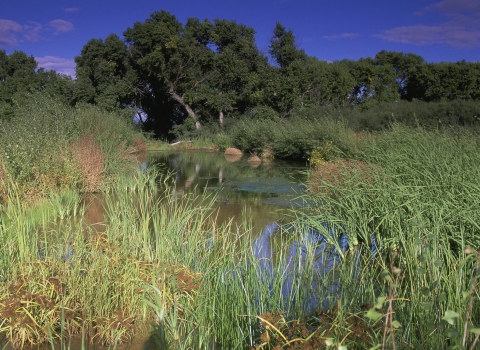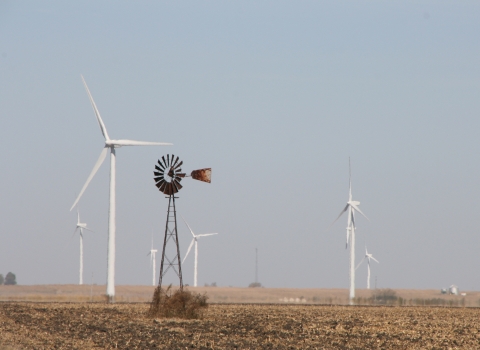| The Southeast Region of the U.S. Fish and Wildlife Service has selected Chris Pease as the new project leader of Sabine National Wildlife Refuge in Hackberry, Louisiana. For the past eight years, Pease has served as refuge manager of the Service's Matagorda Island National Wildlife Refuge, situated on a 56,000-acre barrier island in Texas. "Pease's knowledge and experience gained from the Texas Gulf Coast will be invaluable to us, particularly in dealing with water management issues and in developing a strong environmental education program," said Sam D. Hamilton, Southeast Regional Director. |
As manager at Matagorda Island, Pease established an environmental education and research center through partnerships with The Nature Conservancy and the Texas Parks and Wildlife Department. He also helped reintroduce the aplomado falcon within the refuge. Energy consumption on the refuge was cut in half by using more efficient generators and solar power, and tidal circulation in over 3,000 acres of marsh was enhanced through levee manipulation. Pease also developed a clean-up program for petroleum and hazardous waste containers that wash up on the refuge.
"We put together a strong program at Matagorda Island Refuge with a small, dedicated staff, and we accomplished good things for wildlife in the face of adversity - - limited budgets and staff and logistical challenges, such as only boat access to the refuge, salt water corrosion of equipment and facilities, and hurricanes," said Pease. He mentioned that among his biggest challenges this past year were high tides and flooding. At one point, one-quarter of the entire island was under water. "The challenges are continuous. To persevere and do right by our wildlife resources are the rewards," Pease said.
Pease grew up along the middle Texas Gulf coast and spent most of his youth in Portland, a small community north of Corpus Christi. He obtained his associate's degree in marine science from Del Mar College in Corpus Christi, a bachelor's degree from Corpus Christi State University, and did graduate course work at Texas A&I (now Texas A&M).
Prior to working with the Service at Matagorda Island, Pease was a biologist with the New Mexico Department of Game and Fish, working on land management, water, and contaminant issues.
"I'm really looking forward to coming to a different region of the country, where I can learn new things and look at things in a new way," said Pease. A connoisseur of Mexican food, Pease adds that he is also looking forward to enjoying Louisiana gumbo.
Pease is married and has two daughters, Allison and Emily, who are attending college. His wife, Rebecca, is a high school chemistry teacher.
Sabine National Wildlife Refuge, established in 1937, is 124,511 acres of marshes, ranging from fresh water to almost sea strength in salinity. Its primary purpose is to provide habitat for migratory waterfowl and fish. Two species federally-listed as endangered or threatened occur on the refuge - - the Kemp's Ridley sea turtle and the bald eagle. The refuge also hosts alligators, muskrats, blue crab, and shrimp. Visitors enjoy walking along the Marsh trail; fishing, crabbing, and castnetting for shrimp; photographing wildlife; and waterfowl hunting, including participating in a youth hunt. Sabine has a 12-person staff and hosts about 300,000 visitors annually.
The U.S. Fish and Wildlife Service is the principal federal agency responsible for conserving, protecting, and enhancing fish and wildlife and their habitats for the continuing benefit of the American people. The Service manages the 93-million-acre National Wildlife Refuge System comprising more than 500 national wildlife refuges, thousands of small wetlands, and other special management areas. It also operates 66 national fish hatcheries and 78 Ecological Services field offices. The agency administers the Endangered Species Act, manages migratory bird populations, enforces federal wildlife laws, restores nationally significant fisheries, conserves and restores wildlife habitat such as wetlands, and helps foreign governments with their conservation efforts. It also oversees the Federal Aid Program that distributes hundreds of millions of dollars in excise taxes on fishing and hunting equipment to state wildlife agencies.
X X X
Release #: R99-023

